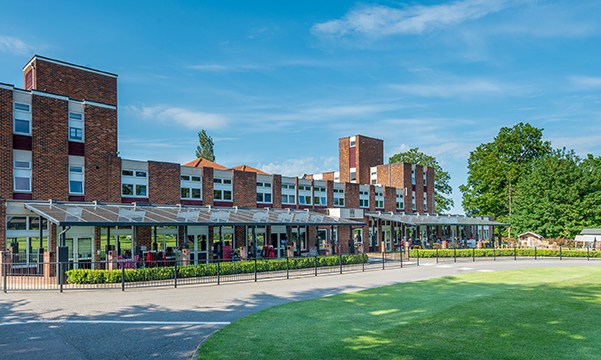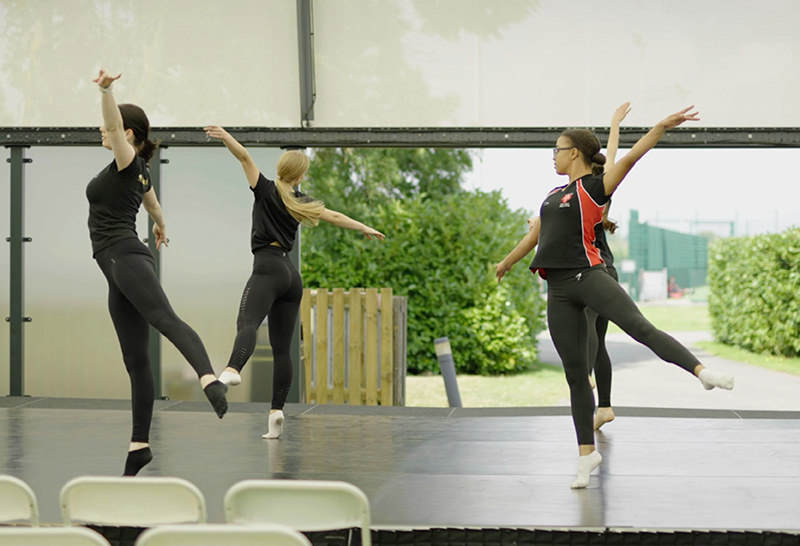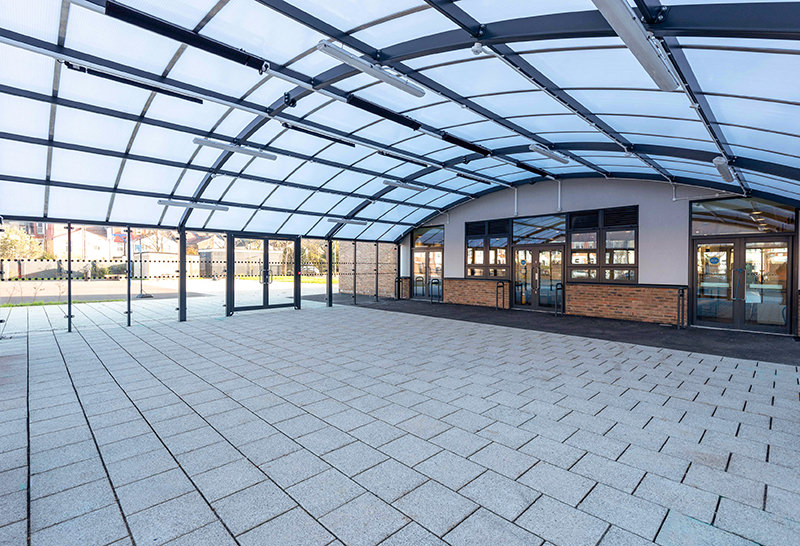
Canopies & Walkways
- All Canopies & Walkways
- Fabric Canopies
-
Polycarbonate Roof
Canopies - Covered Walkways
- Enclosed Canopies
- MUGA Canopies
- Timber Canopies
- Entrance Canopies

How School Canopies Can Extend Outdoor Learning Into the Colder Months
As the colder months approach, using outdoor environments for learning can seem daunting in the face of inclement weather. Covered outdoor spaces within schools can be developed to provide highly valuable assets that help facilitate enriching learning experiences for pupils. Moreover, establishing flexible covered spaces that can be utilised for dining, breakout sessions, and outdoor play is invaluable.
With a growing understanding and emphasis on the benefits that outdoor environments have on learning and development, establishing covered spaces that are fully protected from inclement weather can be a transformative addition for schools, successfully extending outdoor learning into the colder months and fostering a more resilient and immersive educational experience. This is where school canopies come in. Read on to learn what they are and how they can benefit your school.
Pupil Development
Ease Congestion
Improved Health and Wellbeing
Enhanced Engagement
While the benefits of outdoor learning are widespread and awareness is developing on an international scale, with 44% of teachers increasing the type and frequency of lessons taken outside, the colder months can place restrictions on achieving these.
The changes in seasons present unique challenges, bringing less-accommodating temperatures, limited daylight, and inclement weather, which can hinder outdoor learning activities and pose safety concerns for pupils and teachers.
The discomfort caused by cold and inclement weather can also quickly reduce pupils’ enthusiasm and engagement in lessons, while many schools might have restrictions on outdoor space, making it challenging to conduct outdoor lessons without adequate infrastructure.

To overcome these challenges and extend the benefits of outdoor learning throughout the year, a school canopy can serve as an invaluable asset, providing a covered outdoor space that effectively shields students and allows lessons to proceed despite inclement weather. They act as a protective barrier for pupils and teachers, enhancing safety by reducing slip-risk and ensuring a warm, dry and ultimately comfortable environment that encourages increased lesson participation. Opportunities are then in place to develop a curriculum that effectively integrates outdoor learning consistently across all seasons.
This is especially important for lessons that involve hands-on activities or creative projects that require a dry and secure environment. Establishing versatile learning environments, school canopies can effectively accommodate various activities, from science labs to a covered multi-use games area, adapting to enable diverse teaching methods and subjects.
Aligning with current educational developments, school canopies can additionally help to reinforce commitments to environmental education and sustainability. Outside of normal school hours, canopies can also serve as effective gathering spaces for extra-curricular school events, fostering a sense of community among pupils, parents, and the school itself.
To deliver consistently high levels of year-round operational efficiency and the maintenance of a comfortable, weather-protected environment, certain design considerations must be taken into account when designing a school canopy to extend outdoor learning into the colder months.

To establish a more weatherproof environment, the design of a school canopy should eliminate direct openings to the external environment. Enclosing a school canopy provides a platform to create substantial weather protected spaces cost-effectively, utilising specifications like side cladding, doors and surfacing options to help establish enhanced weather protected spaces.
For use types such as outdoor learning, an enclosed canopy design can effectively utilise available external areas, combined with the integration of suitable lighting and heating fixtures to provide comfort and enable comfortable year-round use.
Dynamic Thermal Modelling (DTM) analysis in the design of a school canopy can help ensure that aspects such as roof design, canopy size, and the positioning of ventilation gaps, doors, and heaters are adjusted as required to ensure internal temperatures in the colder months fall within accepted parameters for the use.
A school canopy is a pragmatic investment that can extend the benefits of outdoor learning into the colder months, enhancing educational environments across all seasons. To overcome the challenges of these seasons, they provide essential protection from harsh, inclement weather, supporting year-round curriculum development and offering opportunities to align with the broader aspirations of environmental awareness and community building.
As UK schools seek innovative ways to enrich the learning experience for their pupils, embracing outdoor learning throughout the year enables institutions to foster versatility and better class engagement, providing an optimum platform for pupils to embrace the challenges of the future.